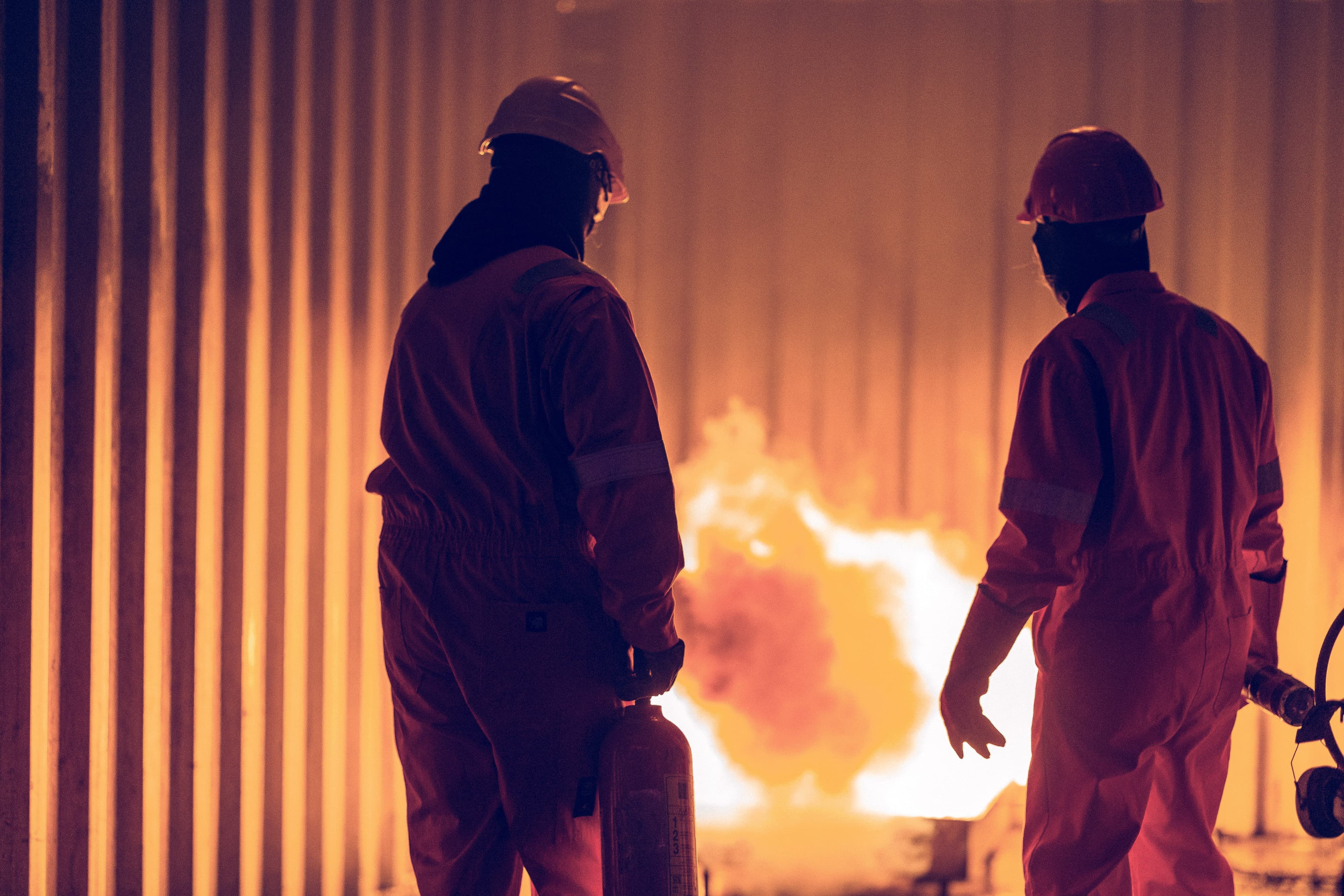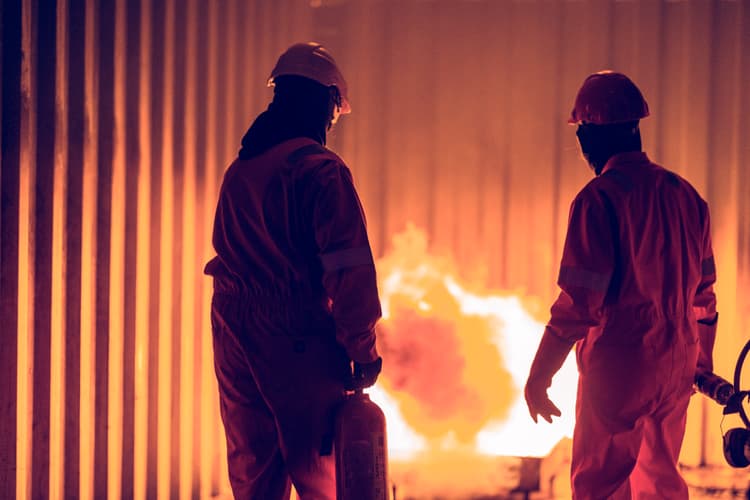
Emergency Response and Firefighting Training

A proactive approach to crisis management
Emergencies are unpredictable. At Maersk Training, we make sure you're fully prepared when the unexpected happens. Our specialised Emergency Response and Firefighting Training equips you to:
-
Manage crises confidently in high-pressure situations.
-
Mitigate risks to ensure the safety of your team and operations.
-
Take decisive action to protect people, assets, and the environment.
With this proactive training, you'll be ready to handle whatever challenges come your way.

What is the purpose of Emergency Response & Fire Fighting training?
This training gives you the skills and experience to respond effectively to emergencies, especially in high-risk environments like offshore oil and gas.
The key aims are to:
-
Equip you to handle fires, gas leaks, and other critical incidents.
-
Help you minimise risks to people, assets, and the environment.
-
Provide hands-on experience in managing real-world emergency scenarios.
With this training, you'll be ready to respond confidently in high-pressure situations, keeping yourself and your team safe.
Explore our Emergency Response and Firefighting programmes

OIM Controlling Emergencies
The OPITO-standard course equips Offshore Installation Managers with essential skills for effective emergency management.

GWO Advanced Rescue Training
GWO ART designed to equip wind energy professionals with advanced rescue skills for complex emergency situations in the wind industry.

STCW Advanced Fire Fighting
STCW Advanced Fire Fighting equips seafarers with skills to control and manage onboard fire incidents, covering prevention, response, and safety procedures.
Emergency Response and Firefighting training objectives and benefits
Emergency response procedures
Fire fighting techniques
Risk assessment and hazard identification
Regulatory compliance
Safety culture promotion
Professional development
Why choose Maersk Training for Emergency Response and Firefighting training?
Comprehensive curriculum
Our training programmes cover all phases of emergency response, from initial alert to recovery, providing a complete understanding of crisis management and the skills needed to handle emergencies with confidence.
Led by experts
Our Emergency Response & Fire Fighting training is delivered by seasoned professionals, ensuring you receive expert guidance and learn the best practices in crisis management from industry leaders
Globally recognised certifications
We offer industry-specific certifications, including GWO (Global Wind Organisation) for the wind sector, OPITO for oil & gas and STCW for maritime. These internationally respected credentials ensure your training meets the highest standards and equips you with the skills to thrive in your industry.
Strategic partner
With training facilities strategically located in key oil & gas hubs around the world, Maersk Training is within reach no matter where your operations are based.
Frequently asked questions
Be prepared for the unexpected
Connect with our team of experts for any further guidance on your training needs.